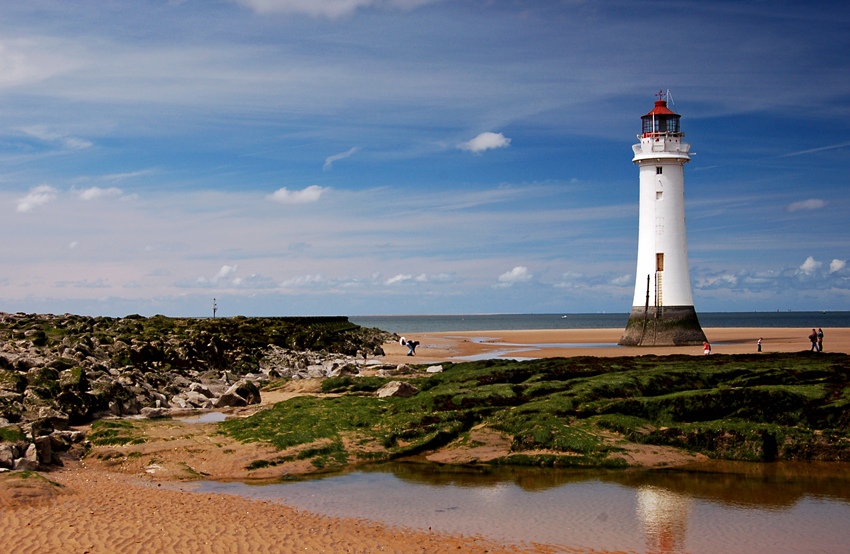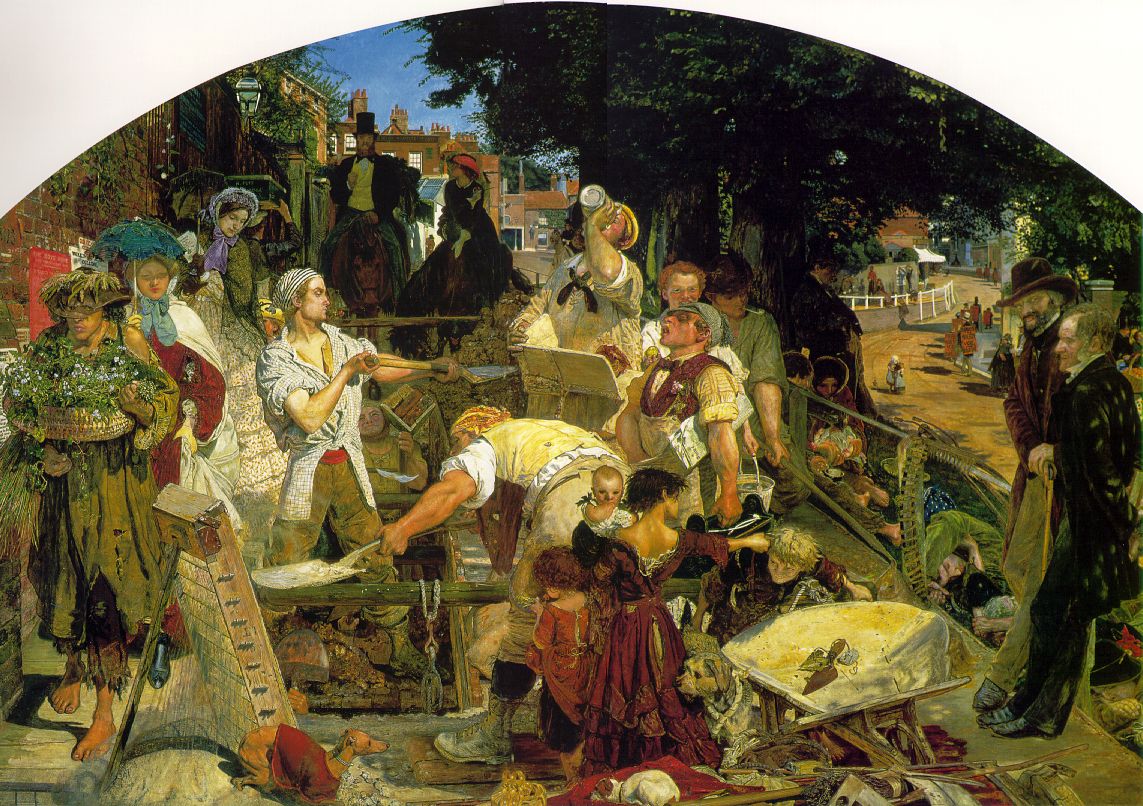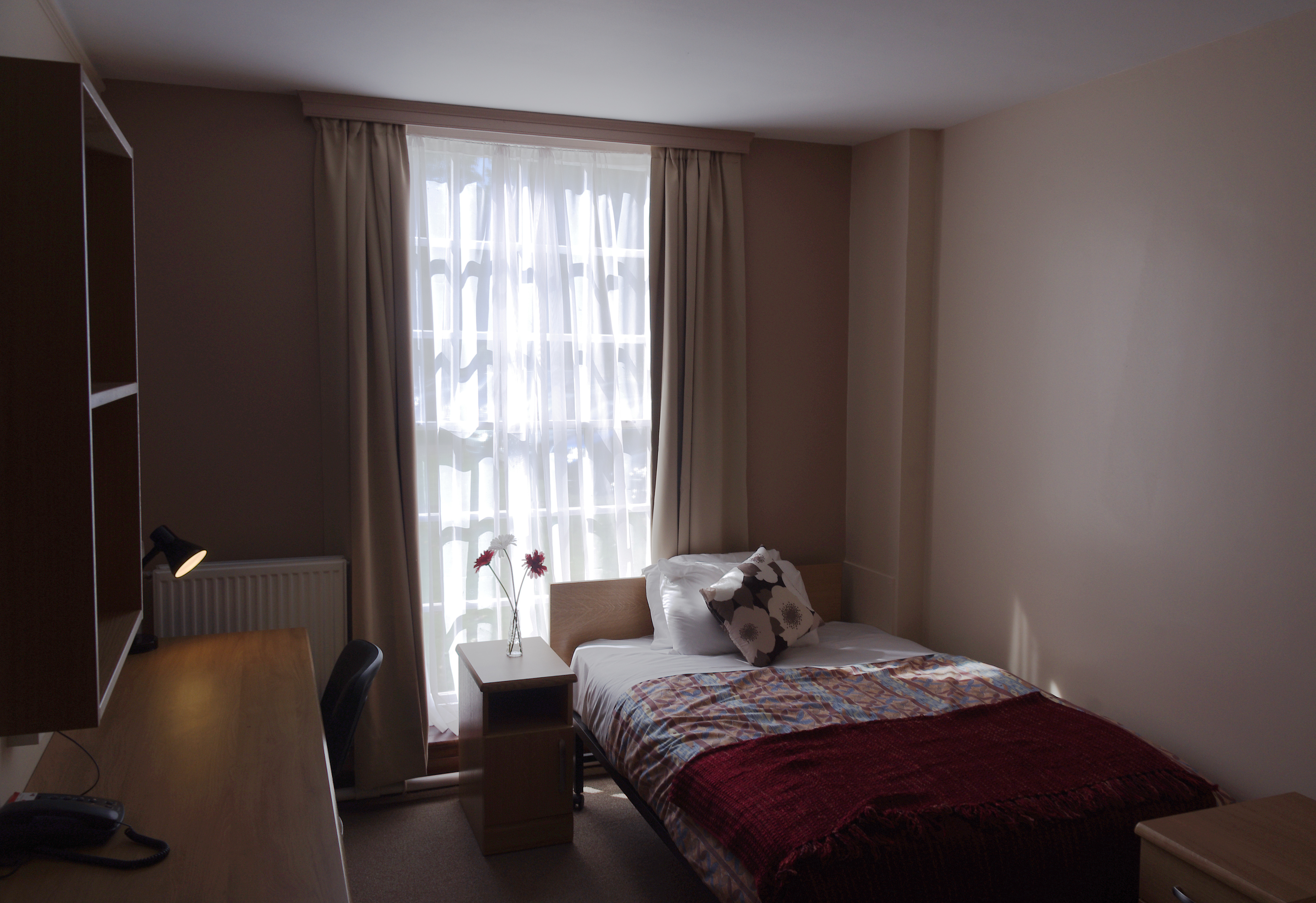|
Donald McMorran
Donald Hanks McMorran Royal Academy, RA Royal Institute of British Architects, FRIBA Society of Antiquaries of London, FSA (3 May 1904 – 6 August 1965) was an English architect who is known today for his sensitive continuation of the Georgian architecture, neo-Georgian and classicism, classical tradition in the period after the Second World War. His buildings include halls of residence at the University of Nottingham, Wood Street Police Station in the City of London, public housing schemes around London, the South Block extension to the Old Bailey and civic buildings in Exeter and Bury St Edmunds. Early life and education Donald Hanks McMorran was born in 1904 in Wallasey, Cheshire. His parents, William Edwin McMorran and Edith McMorran (née Hanks) originally came from north London. The family moved back to London and Donald was educated at Harrow High School, Harrow County Grammar School. He studied under H. Farquharson in 1921. Career In 1925 McMorran was admitted to the ... [...More Info...] [...Related Items...] OR: [Wikipedia] [Google] [Baidu] |
Wallasey
Wallasey () is a town in the Metropolitan Borough of Wirral, Merseyside, England. It is at the mouth of the River Mersey, on the north-eastern corner of the Wirral Peninsula. It lies within the Historic counties of England, historic county boundaries of Cheshire, and became part of Merseyside in 1974. At the 2021 United Kingdom census, 2021 Census, the built up area as defined by the Office for National Statistics had a population of 85,610. History Toponymy The name of Wallasey originates from the Old English word ''Walh'', meaning a Briton, a Welshman, which is also the origin of the name Wales. The suffix ''-ey'' denotes an island or area of dry land. Originally the higher ground now occupied by Wallasey was separated from the rest of Wirral by the creek known as Wallasey Pool (which later became the docks), the marshy areas of Bidston, Bidston Moss and Leasowe, and sand dunes along the coast. Early history The area was sparsely populated before the 19th century and horse ... [...More Info...] [...Related Items...] OR: [Wikipedia] [Google] [Baidu] |
Harrow High School
Harrow High School is a co-educational academy in the London Borough of Harrow and a specialist Sports College. It was previously called Gayton High School and Harrow County School for Boys. The school has a sixth form for post-16 studies part of the Harrow Sixth Form Collegiate. There was an independent school with the same name on a nearby site until the late 1980s. History The site was formerly the home of Harrow County School for Boys, a grammar school. In 1975, when the London Borough of Harrow adopted a comprehensive system of education, the school became known as Gayton High School: it remained an all-boys school. Comprehensive Gayton High School was the last school in Harrow to become comprehensive in September 1975. Later, in 1998, the school became coeducational and changed its name to Harrow High School, a specialist sports college. The school has gained a number of national awards for the quality of its provision, including the Artsmark Gold award (2003), Sportsm ... [...More Info...] [...Related Items...] OR: [Wikipedia] [Google] [Baidu] |
Hampstead
Hampstead () is an area in London, England, which lies northwest of Charing Cross, located mainly in the London Borough of Camden, with a small part in the London Borough of Barnet. It borders Highgate and Golders Green to the north, Belsize Park to the south and is surrounded from the northeast by Hampstead Heath, a large, hilly expanse of parkland. Hampstead is known for its intellectual, artistic, liberal, and literary associations. It contains a number of listed buildings, such as Burgh House, Kenwood House, the Spaniard's Inn, and the Everyman cinema. With some of the most expensive housing in London, Hampstead has had many notable residents, both past and present, including King Constantine II of Greece and his wife Queen Anne Marie, Helena Bonham Carter, Agatha Christie, T. S. Eliot, Jon English, Sigmund Freud, Stephen Fry, Ricky Gervais, Jim Henson, George Orwell, Harry Styles and Elizabeth Taylor. As of 2004, Hampstead has been home to more Prime Mini ... [...More Info...] [...Related Items...] OR: [Wikipedia] [Google] [Baidu] |
Grade II Listed
In the United Kingdom, a listed building is a structure of particular architectural or historic interest deserving of special protection. Such buildings are placed on one of the four statutory lists maintained by Historic England in England, Historic Environment Scotland in Scotland, in Wales, and the Historic Environment Division of the Department for Communities in Northern Ireland. The classification schemes differ between England and Wales, Scotland, and Northern Ireland (see sections below). The term has also been used in the Republic of Ireland, where buildings are protected under the Planning and Development Act 2000, although the statutory term in Ireland is " protected structure". A listed building may not be demolished, extended, or altered without permission from the local planning authority, which typically consults the relevant central government agency. In England and Wales, a national amenity society must be notified of any work to be done on a listed building ... [...More Info...] [...Related Items...] OR: [Wikipedia] [Google] [Baidu] |
Sydenham Hill
Sydenham Hill forms part of Norwood Ridge, a longer ridge and is an affluent Human settlement, locality in southeast London. It is also the name of a road which runs along the northeastern part of the ridge, demarcating the London Boroughs of London Borough of Southwark, Southwark, London Borough of Bromley, Bromley, and London Borough of Lewisham, Lewisham. Its highest part is the apex of the Boroughs of Southwark and Lewisham and the 15th-highest List of highest points in London, peak in London, at . The road connects the A205 road in the northeast at Forest Hill, London, Forest Hill with the A212 road to the southwest at Crystal Palace, London, Crystal Palace. Sydenham Hill railway station, Sydenham Hill Wood, Sydenham Hill Wood nature reserve and ''Dulwich and Sydenham Hill Golf course'' are on its west slopes thus in the Borough of Southwark. The London boroughs of London Borough of Lambeth, Lambeth and London Borough of Croydon, Croydon have part of the hill within their ... [...More Info...] [...Related Items...] OR: [Wikipedia] [Google] [Baidu] |
Public Housing In The United Kingdom
Public housing in the United Kingdom, also known as council housing or social housing, provided the majority of rented accommodation until 2011, when the number of households in private rental housing surpassed the number in social housing. Dwellings built for public housing, public or social housing use are built by or for Municipality, local authorities and known as council houses. Since the 1980s, non-profit housing associations (HA) became more important and subsequently the term "social housing" became widely used — as technically, council housing only refers to properties owned by a local authority — as this embraces both council and HA properties, though the terms are largely used interchangeably. Before 1865, housing for the poor was provided solely by the private sector. Council houses were then built on council estates — known as schemes in Scotland — where other amenities, like schools and shops, were often also provided. From the 1950s, alongside large deve ... [...More Info...] [...Related Items...] OR: [Wikipedia] [Google] [Baidu] |
Lantern (architecture)
A roof lantern is a daylighting architectural element. Architectural lanterns are part of a larger roof and provide natural light into the space or room below. In contemporary use it is an architectural skylight structure. A lantern roof will generally mean just the roof of a lantern structure in the West, but has a special meaning in Indian architecture (mostly Buddhist, and stretching into Central Asia and eastern China), where it means a dome-like roof raised by sets of four straight beams placed above each other, "arranged in diminishing squares", and rotated with each set. Normally such a "lantern" is enclosed and provides no light at all. The term ''roof top lantern'' is sometimes used to describe the lamps on roofs of taxis in Japan, designed to reflect the cultural heritage of Japanese paper lanterns. History The glazed lantern was developed during the Middle Ages, one notable medieval example being that atop the 14th-century Octagon Tower at Ely Cathedral in Englan ... [...More Info...] [...Related Items...] OR: [Wikipedia] [Google] [Baidu] |
New Classical Architecture
New Classical architecture, also known as New Classicism or Contemporary Classical architecture, is a Contemporary architecture, contemporary movement that builds upon the principles of Classical architecture. It is sometimes considered the modern continuation of Neoclassical architecture, even though other styles might be cited as well, such as Gothic architecture, Gothic, Baroque architecture, Baroque, Renaissance architecture, Renaissance or even non-Western culture, Western styles – often referenced and recreated from a Postmodern architecture, postmodern perspective rather than as strict Revivalism (architecture), revivals. The design and construction of buildings in evolving classical styles continued throughout the 20th and 21st centuries, even as Modern architecture, modernist and other non-classical theories broke with the classical language of architecture. The New Classical movement is also tied to a resurgence in new traditional architecture, which emphasizes crafts ... [...More Info...] [...Related Items...] OR: [Wikipedia] [Google] [Baidu] |
Historicism (art)
Historicism or historism comprises artistic styles that draw their inspiration from recreating historic styles or imitating the work of historic artists and artisans. Lucie-Smith, Edward. ''The Thames and Hudson Dictionary of Art Terms''. London: Thames & Hudson, 1988, p. 100. This is especially common in architecture, where there are many different styles of Revival architecture, which dominated large buildings in the 19th century. Through a combination of different styles or the implementation of new elements, historicism can create completely different aesthetics than former styles. Thus, it offers a great variety of possible designs. Overview In the history of art, after Neoclassicism which in the Romantic era could itself be considered a historicist movement, the 19th century included a new historicist phase characterized by an interpretation not only of Greek and Roman classicism, but also of succeeding stylistic eras, which were increasingly respected. In particular ... [...More Info...] [...Related Items...] OR: [Wikipedia] [Google] [Baidu] |
Bury St Edmunds Abbey
The Abbey of Bury St Edmunds was once among the richest Benedictine Monastery, monasteries in England, until its Dissolution of the Monasteries, dissolution in 1539. It is in the town that grew up around it, Bury St Edmunds in the county of Suffolk, England. It was a centre of pilgrimage as the burial place of the Anglo-Saxon martyr-king Edmund the Martyr, Saint Edmund, killed by the Great Heathen Army of Danes in 869. The ruins of the abbey church and most other buildings are merely rubble cores, but two very large medieval gatehouses survive, as well as two secondary medieval churches built within the abbey complex. History In the early 10th century the allegedly "incorrupt" (i.e. not decomposed) body of the martyred king, Edmund the Martyr, St Edmund, was translated from ''Hægelisdun'' (a placename long and widely thought - but probably in error - to refer to Hoxne) to ''Beodricsworth'', afterwards known as St Edmundsbury, a site that had probably had a monastery founded by ... [...More Info...] [...Related Items...] OR: [Wikipedia] [Google] [Baidu] |
Cripps Hall
This is a list of dormitory, halls of residence on the various campuses of the University of Nottingham in Nottingham, England. The University of Nottingham has a particularly well developed system of halls located on its campus. The halls acts a microcosms of the university at large and provide a community-level forum for the interaction of undergraduates, postgraduates and senior academics. As of 2020, incoming undergraduate students do not apply for a specific hall but a room type and a 'zone'; they can be allocated into any of the halls in that zone. The zones are as follows: Central Zone: Derby and Hugh Stewart North Zone: Cripps and Lenton & Wortley Sports Zone: Ancaster, Nightingale, Rutland and Sherwood West Zone: Cavendish, Florence Boot and Willoughby Quiet Zone: Lincoln (part of a trial for 2020, aimed at students in search of a quieter lifestyle with no alcohol and earlier quiet hours.) The halls are generally named either after counties, districts or places ... [...More Info...] [...Related Items...] OR: [Wikipedia] [Google] [Baidu] |
Sir Edwin Lutyens
Sir Edwin Landseer Lutyens ( ; 29 March 1869 – 1 January 1944) was an English architect known for imaginatively adapting traditional architectural styles to the requirements of his era. He designed many English country houses, war memorials and public buildings. In his biography, the writer Christopher Hussey (historian), Christopher Hussey wrote, "In his lifetime (Lutyens) was widely held to be our greatest architect since Christopher Wren, Wren if not, as many maintained, his superior". The architectural historian Gavin Stamp described him as "surely the greatest British architect of the twentieth (or of any other) century". Lutyens played an instrumental role in the construction of New Delhi, which would later on serve as the seat of the Government of India. In recognition of his contribution, New Delhi is also known as "Lutyens' Delhi". In collaboration with Sir Herbert Baker, he was also the main architect of several monuments in New Delhi such as the India Gate; he als ... [...More Info...] [...Related Items...] OR: [Wikipedia] [Google] [Baidu] |








